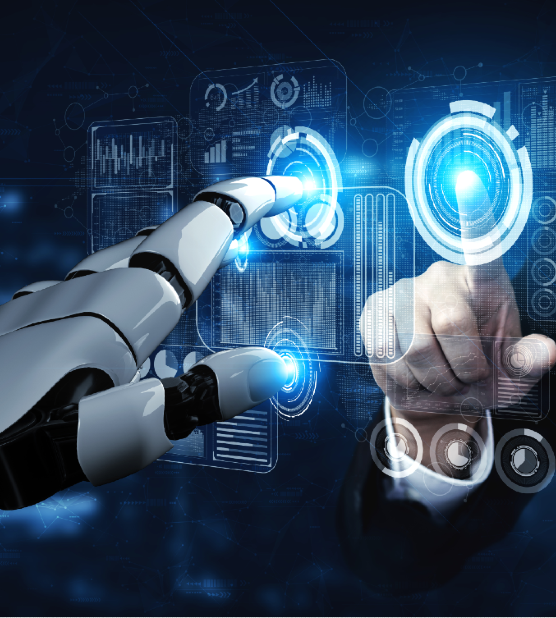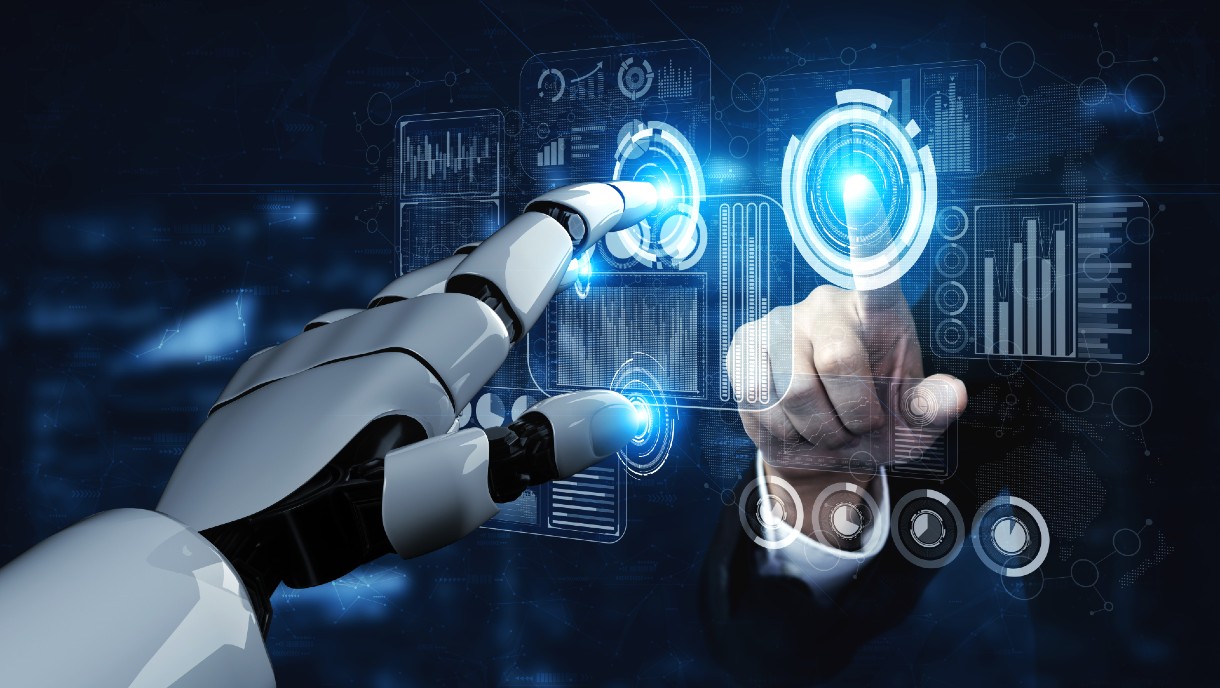Artificial intelligence (AI) has the potential to revolutionize the field of cybersecurity, providing new tools and techniques to detect and prevent cyberattacks. However, there are also concerns that AI could be used by attackers to automate and escalate their attacks, creating new challenges for cybersecurity professionals.
Cyberattacks are increasingly using artificial intelligence (AI) even as AI is being used to boost the productivity of business operations in many sectors helping to free humans from mundane, tedious jobs so that they can concentrate on more skilled and critical tasks. The use of AI is critical when dealing with cybersecurity risks. Although technical challenges and resource constraints remain, AI can help to improve network systems’ robustness and resilience. AI has revolutionized business practices, and companies are using it to do everything from improving customer experience to optimizing supply chains. But the ways in which AI is changing cybersecurity is an eye-opener for many.
How AI is changing cybersecurity
As businesses increasingly adopt AI, machine learning (ML), and other deep analytics strategies for process automation, there are concerns about the need to protect sensitive data from cyberattacks like ransomware, phishing emails, hacking, spam, malware, and more. AI can also be used to launch sophisticated cyberattacks such as the ones described below.
1. Data Poisoning
ML works on data, so unscrupulous elements may use ML models to target or manipulate data so that it performs erroneously. Stringent guidelines can help stave off such attacks.
2. Generative Adversarial Networks (GANs)
GANs pit two neural networks against each other. AI is used to stimulate content and pick mistakes. However, AI-powered GANs are vulnerable to misuse and can be used to generate fake identities to crack passwords and divert attention from actual cyberattacks by mimicking regular traffic. ML algorithms must be made stronger to outsmart such malicious coding.
3. Bot Manipulation
AI algorithms can be manipulated with malicious intent to make wrong or bad decisions. For example, a bot trading on cryptocurrency was manipulated by unscrupulous elements to manipulate the crypto algorithm. AI must be used carefully in cybersecurity to thwart and mitigate cyberattacks.
4. Intrusion Detection
ML can boost intrusion detection. Deep learning can help sift through unstructured data to develop credible sources in heterogeneous environments.
5. Tracing in the Dark Web
The dark web is a hub for illegal activities, including cyberattacks, illegal contraband trade, and malicious internet content distribution. The dark web mandates the use of specific configurations, software, etc. ML can also be used to gather insights into patterns followed by hackers changing or masking their IPs to remain undetected.
6. Multi-entity response
ML helps develop intelligent responses to cybersecurity threats and deal with them quickly and effectively based on user experience and recommendations. Depending on the nature of the threat, these responses can be triggered by ML algorithms once a threat is detected. Then AI can be used to block the cybersecurity threat automatically at its source. AI/ML algorithms can also be used to send out false or spoof signals to confuse the cyberthreat. This gives users enough time to gather information about the ensuing threat or attacker. As such, AI-based, multi-entity response is a great way to deal with large volumes of threats.
The use of AI in cybersecurity presents both advantages and disadvantages, which we explore below.
Advantages of using AI in cybersecurity
1. Ability to learn over time
AI is intelligent technology that helps to improve network or cybersecurity as internal systems get used to it. It uses ML and Deep Learning (DL) to understand the business network’s cybersecurity behavior over time. The AI tool is then used to detect anomalies and take remedial measures before those anomalies affect the organization’s cyber systems.
2. Ability to identify unknown threats
Humans may not be able to identify all the threats facing an organization, including cyberattacks of different motives. The best option for identifying unknown threats that can cause massive damage to the network is to deploy an AI-based tool to detect, identify, and mitigate threats.
3. Ability to handle lots of data
Data is a crucial asset that companies need to protect at any cost. Numerous activities are transacted on a company’s network daily, including data transfers between customers and business, and there is a need to safeguard those activities. AI cybersecurity solutions can help businesses detect any threats arising over their network even if they are masked as normal activity. The automated nature of AI cybersecurity solutions allows them to sift through a huge volume of data and traffic to detect and identify threats.
4. Better vulnerability management
Vulnerability management helps to secure a company’s network. A company deals with many threats each day and needs to detect, identify, and prevent them from happening. AI can assist with vulnerability management by assessing threats more quickly than cybersecurity personnel, thereby increasing the business’ problem-solving ability.
5. Better security
Business networks face constant threats as hackers change their tactics every day to gain network access. It’s difficult to prioritize security tasks if cyberthreats can’t be identified quickly. Deploying AI to detect all types of cyberattacks can help businesses prioritize their efforts and mitigate attacks by reducing the amount of time needed for detection and response.
6. Reduction in duplicate processes
Even as cyberattacks evolve, the best practices for security remain the same in business. Humans may get distracted and let their guards down, exposing the business’ network. In contrast, AI mimics human qualities, addresses shortcomings, reduces duplicate cybersecurity processes, and analyzes business networks to detect security holes that could potentially damage the network.
7. Secure authentication
Customers can access products and services on many websites by logging in through a user account. A company needs an extra security layer to run such a website to ensure all personal data is secure, and that online visitors are safe while browsing the network. AI-based authentication, such as CAPTCHA, facial recognition, and fingerprint scanners, can help determine whether a login is genuine.
Disadvantages of using AI
1. Use of AI by Adversaries
AI cybersecurity solutions are applied by cybersecurity personnel who are tasked with reinforcing cybersecurity best practices in a company. Their main aim is to minimize the risk of cyberattack rather than to continually search for malicious acts. However, cybercriminals can take advantage of those same AI protocols for their own purposes.
2. AI-savvy Cybercriminals
Everyone, including cybercriminals, can gain expertise in AI and use it to devise measures that spoof AI cybersecurity solutions. For example, cybercriminals can use their knowledge of ML to deploy malware, making it appear harmless in order to gain unhindered access to data, websites, passwords, and more. As AI cybersecurity solutions are updated, cybercriminals can use their updated AI knowledge to spoof the AI tools.
AI could also be used by attackers to automate and scale their attacks. For example, an AI-powered bot could be used to launch a distributed denial of service (DDoS) attack, flooding a website with traffic and making it unavailable to users. There are also concerns that AI could be used to impersonate legitimate users, bypassing traditional security measures such as two-factor authentication.
3. Possibility of bias
Another potential risk of AI in cybersecurity is the possibility of bias in the data used to train the algorithms. If the data used to train the AI system is biased, the system itself may be biased and make decisions that are not fair or just. This could have serious consequences in the cybersecurity context, where decisions made by AI systems could have significant consequences for individuals or organizations.
Overall, AI has the potential to be a major asset in the fight against cyber attacks, but it also introduces new challenges and risks that must be carefully managed. As with any new technology, it is important to carefully consider the potential benefits and risks of AI in cybersecurity, and to take steps to mitigate any negative impacts.






